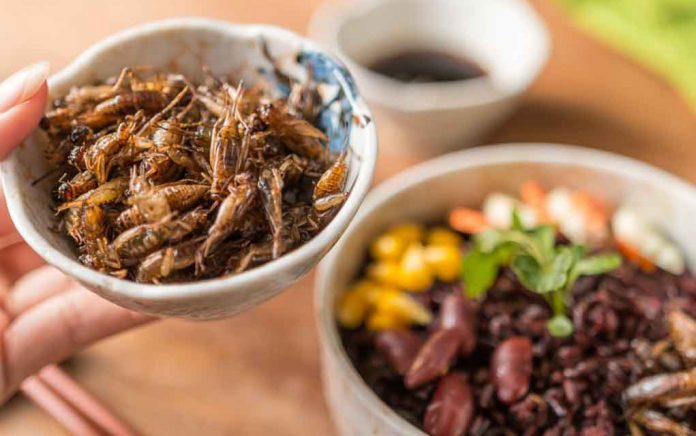
SHTF, and you bug-out. You have all of your supplies packed in the bug-out vehicle, so off you go, fading away into the wilderness. Six months later, you contact friends still living in society to see how life is going. They warn you, stay where you are. Life’s getting treacherous, and they may soon meet up with you. The thought of seeing someone from civilization and actually having others to spend time with sounds exciting. The problem is, their supply of food was low.
You didn’t want to tell them your primary source is bugs and insects — especially crickets. Something you had learned about from a YouTube done by The New Yorker:
In order to avoid starvation when living in a survival situation, you’ll need two main nutrients: fats and protein.
If you’re armed with a rifle or shotgun and plenty of ammunition, that may not be a problem, particularly if there’s game to go after, and you don’t need your time to take care of other issues. However, trapping can be a better way to replenish your food supply. Set your trap, check it a couple of times a day, and go about your activities.
Gathering or foraging is often your best chance at a meal if you know what to look for. When you’re out getting supplies, like wood for a fire, you simply grab some edible plants and insects. Granted, the plants won’t supply you with all the nutrients you need, but insects and bugs can without taking too much time or effort.
Insects and bugs can be found almost everywhere, and nearly 1,900 species are safe to eat. Though it probably seems strange to consider consuming them, they’re primary food sources in some cultures. Before you run out and try to taste test some bugs (because I know you’re dying to), you need to know how to identify them to be sure they’re safe edibles.
Rules to Apply:
- Slow Moving. Be cautious of slow-moving bugs. This is an indication that they are poisonous.
- Fuzzy. Bugs or insects with spines that appear fuzzy use this feature to release toxins.
- Foul Smell. An insect or bug that emits a foul smell does this because of toxins or bacteria carried by the critter.
- Bright Color. Blue, yellow, red, or orange markings indicate the specimen is toxic, while brown, green, and black are usually safe.
- Flies or Mosquitoes. Insects which breed or flock to feces, rotting meat, and stagnant water can make you sick or even cause death due to the diseases they carry.
When using those rules, bear in mind that although they apply generally, there are some exceptions.
There are many insects and bugs that are common around the world. Below are a few that are edible in most places:
Edible Species:
- Ants. All types are edible, can be eaten alive, and have a citrus flavor.
- Earthworms and Grubs. High in protein and iron.
- Bees and Wasps. Edible once the stinger has been removed. Adult bees are best roasted whole, while larvae are better raw.
- June Bugs. Adults and larvae are both edible.
- Mealworms. Popular food source in other cultures.
- Cicadas. Young ones are less crunchy but an excellent food source, young or adult.
- Roly Polys or Pill Bugs. Relative to the shrimp. Good food source.
- Scorpions. Edible once the stinger has been removed.
- Grasshoppers. Edible after the head has been removed and they have been cooked to kill any parasites.
- Tarantulas. Good food source once it has been cooked and one of the few edible spider species.
- Snails and Slugs. Need to be gutted and cooked thoroughly to kill any parasites.
- Termites. A common insect that is high in protein with a flavor like almonds.
Now you have an idea of what to eat in a pinch if you’re out in the wild. Need something to wash those delectables down? Learn how to tap a tree for some safe drinking water here.
Copyright 2020, TheSurvivalGuide.com














